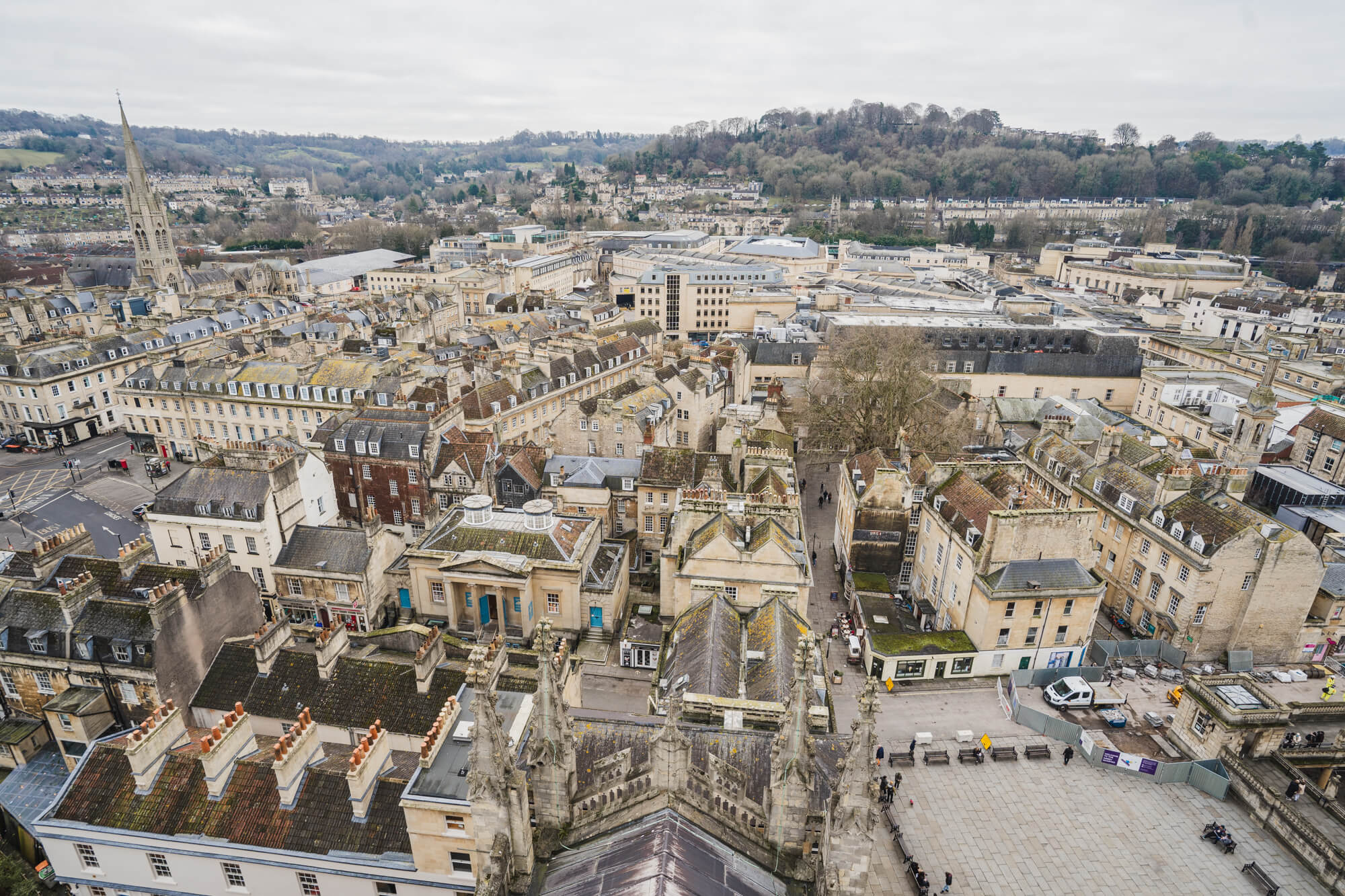*FYI - this post may contain affiliate links, which means we earn a commission at no extra cost to you if you purchase from them. Also, as an Amazon Associate I earn from qualifying purchases. Check out our Privacy Policy and Disclosure for more info.
From gorgeous Georgian architecture to stunning riverside scenery, those looking for places to visit in Bath are truly spoiled for choice.
Bath is most known for the Roman Baths from which the city received its name, but there is much more to explore in this beautiful city than just the baths.
In this post, we’ll be sharing our top picks for places to visit in Bath and brilliant places to see nearby.
We hope you enjoy learning about this historic piece of Somerset, and be sure to let us know in the comments which Bath must-sees we should add to our list!
The Roman Baths
Of course, we have to start with Bath’s number one attraction, the Roman Baths that gave the town its name. There were natural springs in the area even before the Romans came to England, but it was they who built a temple between 60-70 AD on the site.
After the temple’s construction, a bathing site was also built over the next 300 years and the town that surrounded it was known as Aquae Sulis. While the baths fell to ruin after the Romans left, they were redeveloped several times over the years, leading to a revival of popularity as a spa city, especially in the Elizabethan period.
It was believed for many years that bathing in the waters was good for one’s health, although the waters have been off-limits for bathing since the 70s, as the water is no longer safe. Interested visitors can still visit the Baths to see the famous building and waters, as well as museum exhibits all about the history of the town.
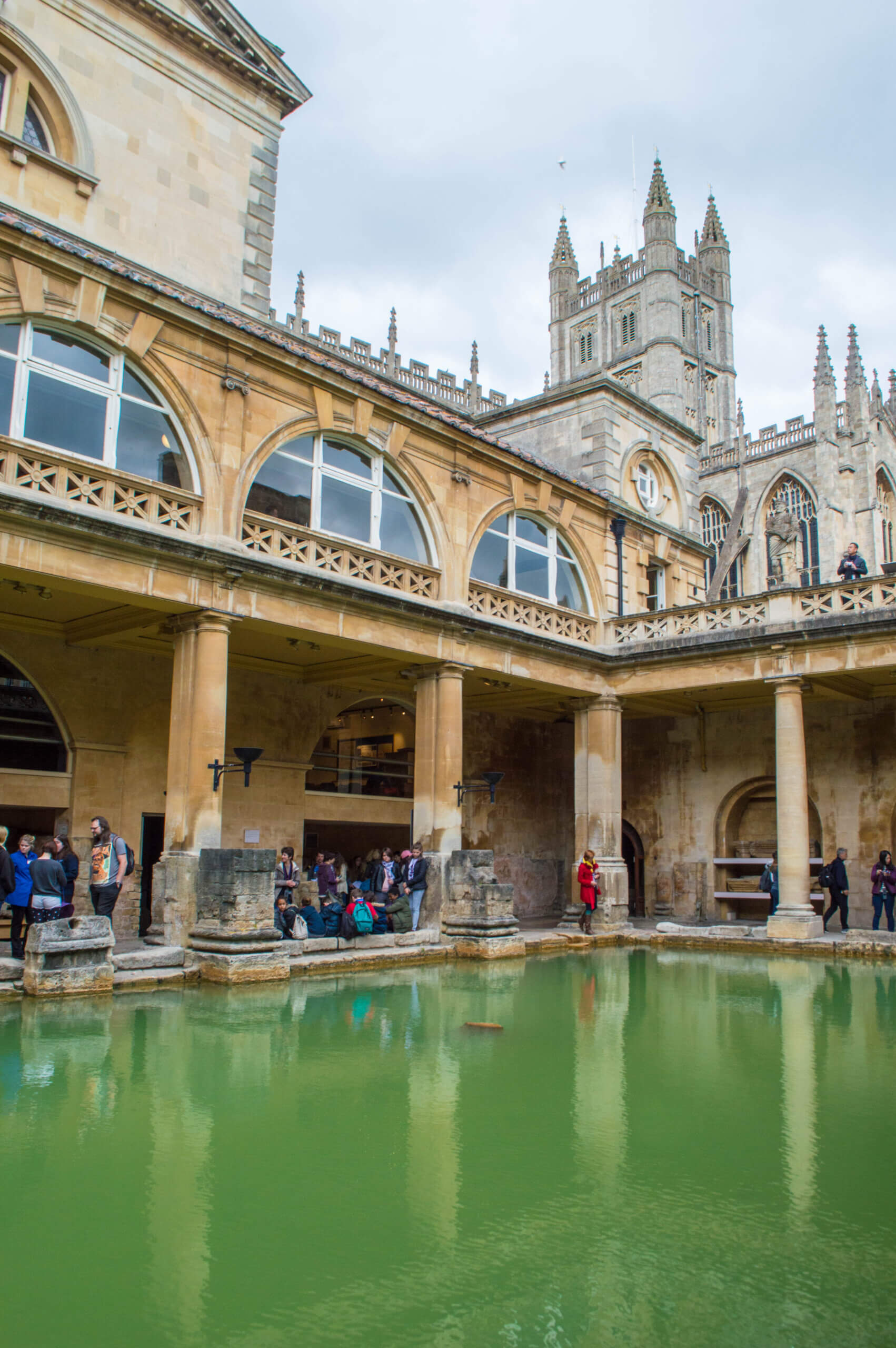
Bath Abbey
Directly next door to the Roman Baths is Bath Abbey, a former Benedictine Monastery that was built using the distinctive yellow Bath stone that can be seen throughout the town.
Bath Abbey was founded in the 7th-century, although the building you see today dates from the 16th-century. It is a beautiful structure, built in the perpendicular Gothic style, with many gorgeous stained-glass windows and a fan-vaulted ceiling.
It is a working church though, so make sure you check ahead of time if there will be services happening during your planned visit.
One of the coolest parts of Bath Abbey can actually be seen from outside; a sculpture on the west front showing angels climbing a ladder to heaven up the side of the building. This represents the ladder that Jacob dreamed about in the Book of Genesis.
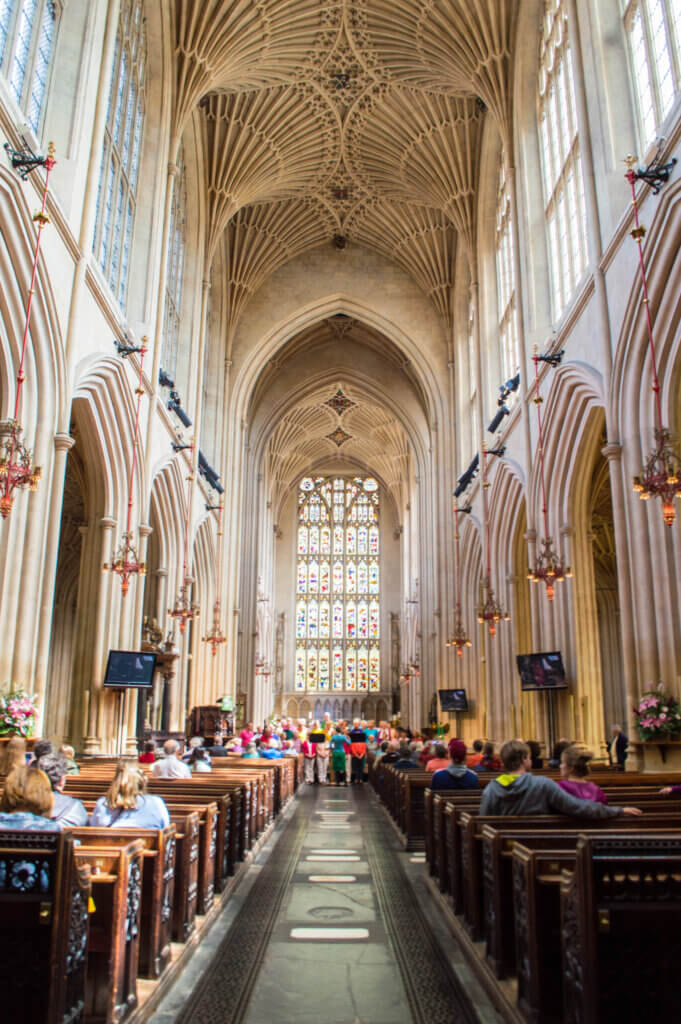
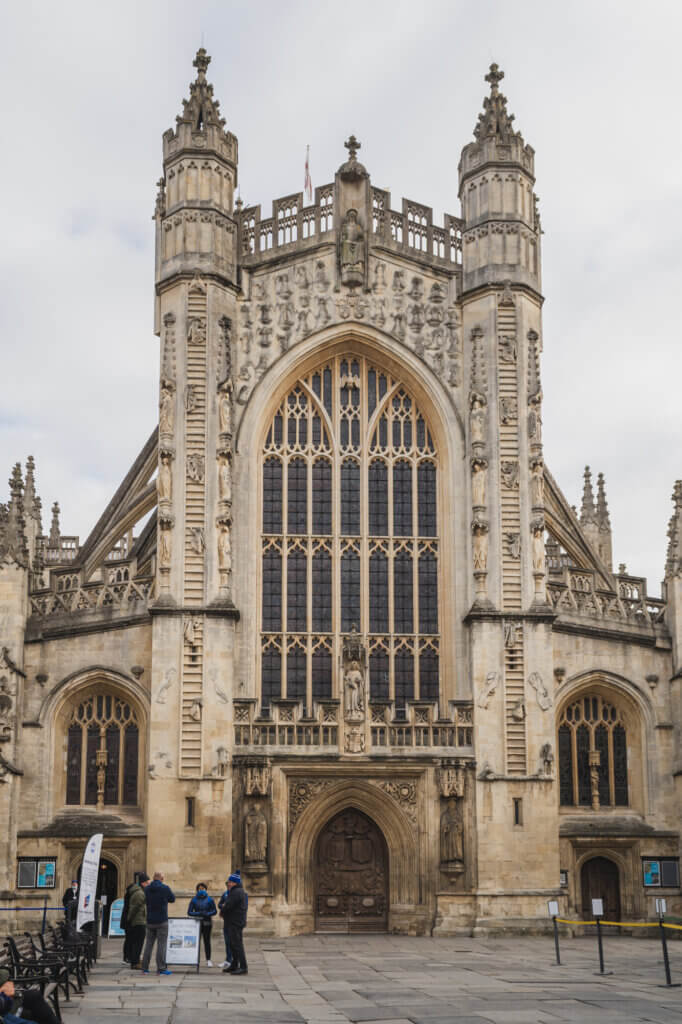
Jane Austen Centre
The British novelist Jane Austen (who wrote Pride & Prejudice and Sense & Sensibility, among others) lived in Bath for around five years of her adult life. Indeed, two of her novels (Persuasion and Northanger Abbey) are actually set in Bath.
Fans of Austen will definitely want to stop by the Jane Austen Centre, which is one of the most popular Bath tourist attractions. It’s located in a beautiful Georgian townhouse on the same street where Austen once lived and gives visitors a glimpse into life in Regency England.
The Jane Austen Centre features staff in costume to help explain Austen’s life, plus visitors can even dress up in Regency attire and get a photo with the Jane Austen waxwork on display. The Regency Tea Room located upstairs is also a wonderful spot for some tea and cake!
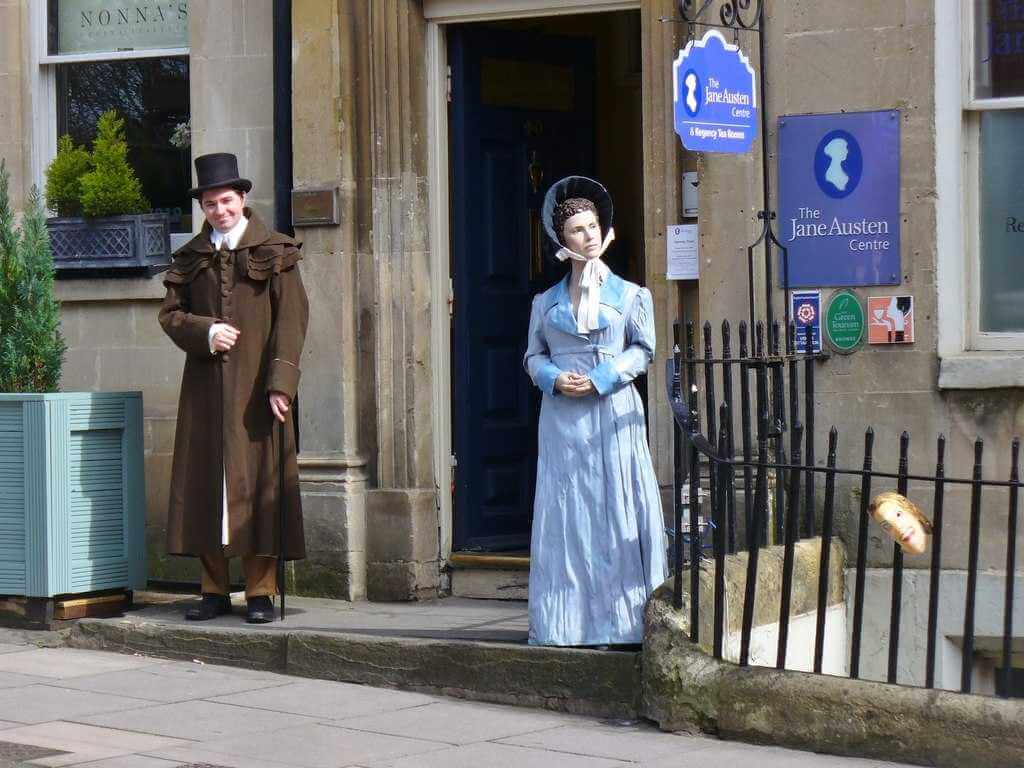
The Circus
The Circus is the name given to a ring of Georgian townhouses in Bath that create a circle (with three entrances) around a circular park. It was designed by the well-known English architect, John Wood, the Elder and was constructed between 1754-1768.
John Wood designed many notable buildings in Bath (and beyond) but was inspired by the circular design of Stonehenge when creating the Circus, which is regarded as his masterpiece, although he died before seeing it completed.
The three entrances (rather than four) mean that visitors will always see the houses as they arrive, instead of another road.
The houses all have spectacularly carved friezes on them, representing nautical symbols, masonic symbols, the arts and sciences. There was once a well on the green in the middle, but now there are trees dating from around 1810.
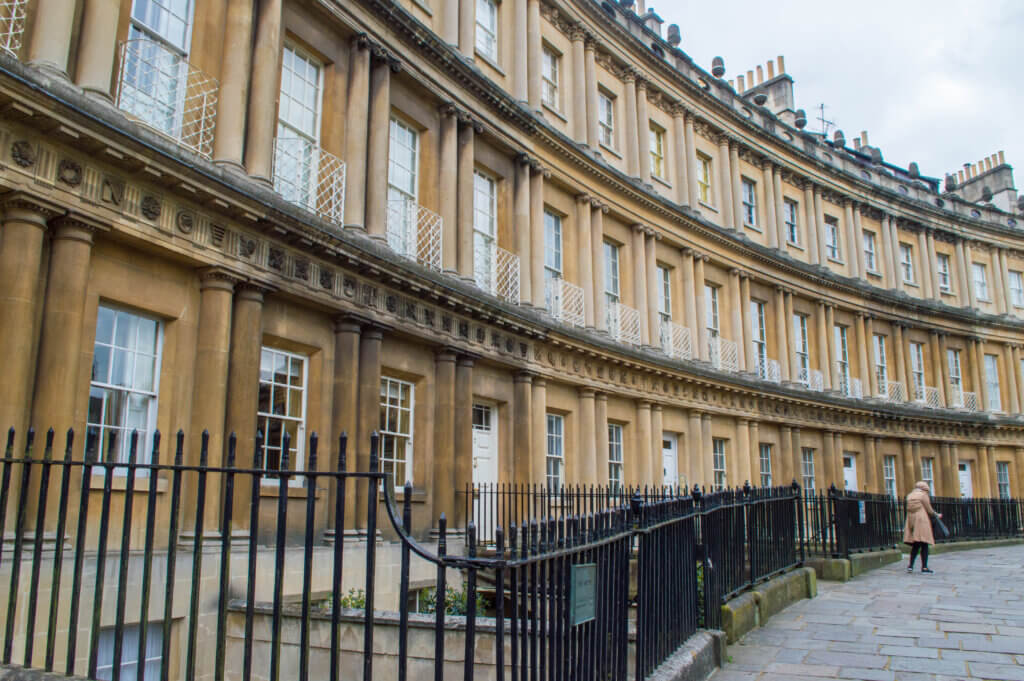
The Royal Crescent
The Royal Crescent is another impressive set of terraces in Bath, located at the other end of Brock Street from the Circus. These terraced houses were designed by John Wood, the Younger, who was the son of the John Wood who designed the Circus.
Obviously, since it’s called a crescent, the Royal Crescent is laid out in a crescent shape looking over the stunning Royal Victoria Park. It is one of the best examples of Georgian architecture in the United Kingdom.
Today, the 30 townhouses contain a number of flats, 10 intact townhouses, the Royal Crescent Hotel & Spa and the No. 1 Royal Crescent Museum. At this museum, visitors can see how Georgians lived at the time.
The facade was also used to depict the Featherington House in Netflix’s Bridgerton.
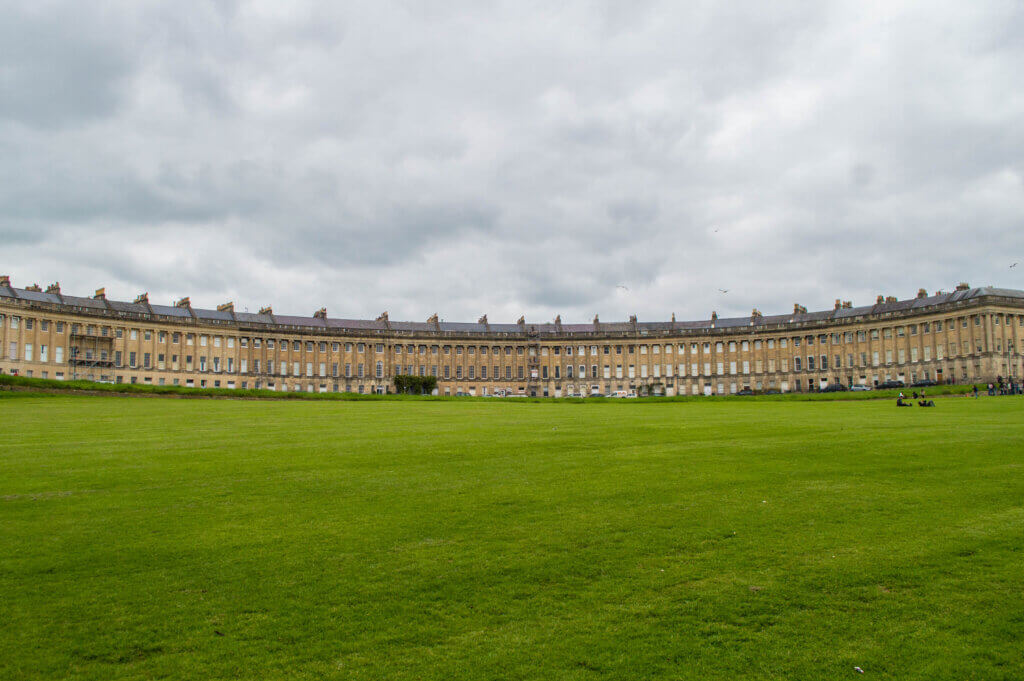
Pulteney Bridge
The Pulteney Bridge is not the only bridge in Bath crossing the River Avon, but it is certainly the prettiest, as well as one of the most unusual places to visit in Bath.
The bridge is quite distinctive because it is one of only four bridges in the world (along with the Rialto Bridge in Venice, Ponte Vecchio in Florence and the Krämerbrücke in Erfurt) which have covered shops across the entire bridge, on both sides. The Pulteney Bridge was completed in 1174 and was designed by Robert Adam, a British neo-classical architect.
One of the best views of the Pulteney Bridge can be seen while walking along the Grand Parade. The southern side of the bridge (facing the Parade Gardens) is the most picturesque since it is built with limestone in the Palladian style. The northern side is not as pretty, but still interesting to see. Under the covers, visitors can find florists, jewellers, cafés and more.
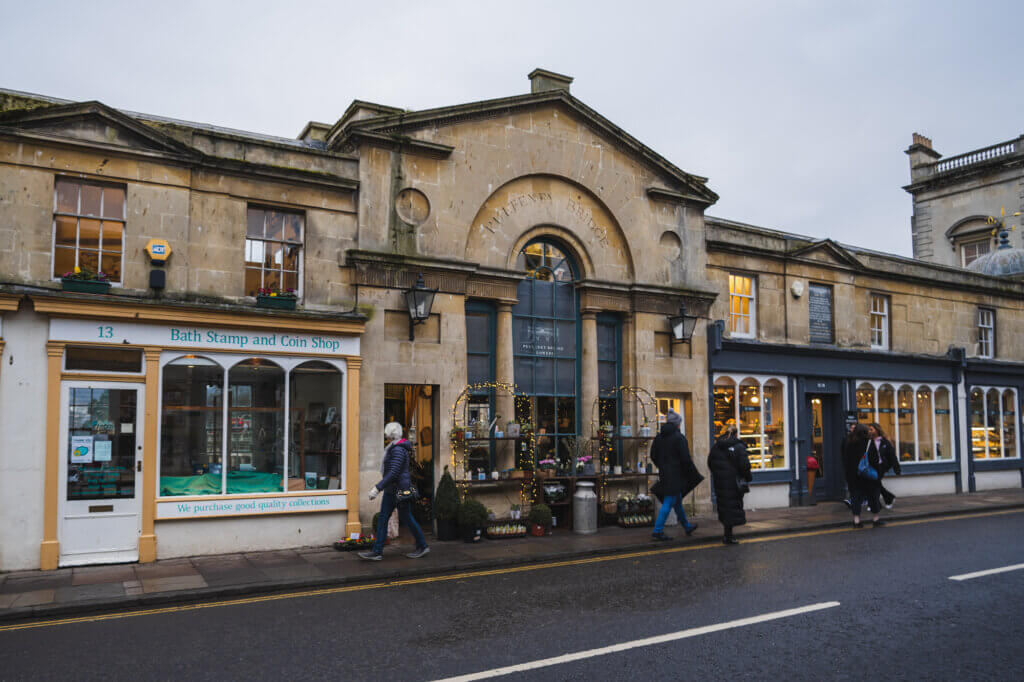
Fashion Museum Bath
For the eager fashionistas among you, be sure to visit the Fashion Museum in Bath, which is currently located within the Assembly Rooms (designed by John Wood, the Elder) although the museum will be moved to a new location in 2023.
The Fashion Museum is one of the best places to visit in Bath if you are at all interested in the history of fashion, as it has examples of fashionable clothing from the 16th-century to the present day. Along with shirts and dresses you can expect to see exquisite gloves as well as shoes from through the ages – including some famous modern shoes!
Each year since the museum opened in 1963 a “Dress of the Year” is also displayed, showing the work of prominent modern designers like Giorgi Armani, Ralph Lauren, Alexander McQueen and Donatella Versace.
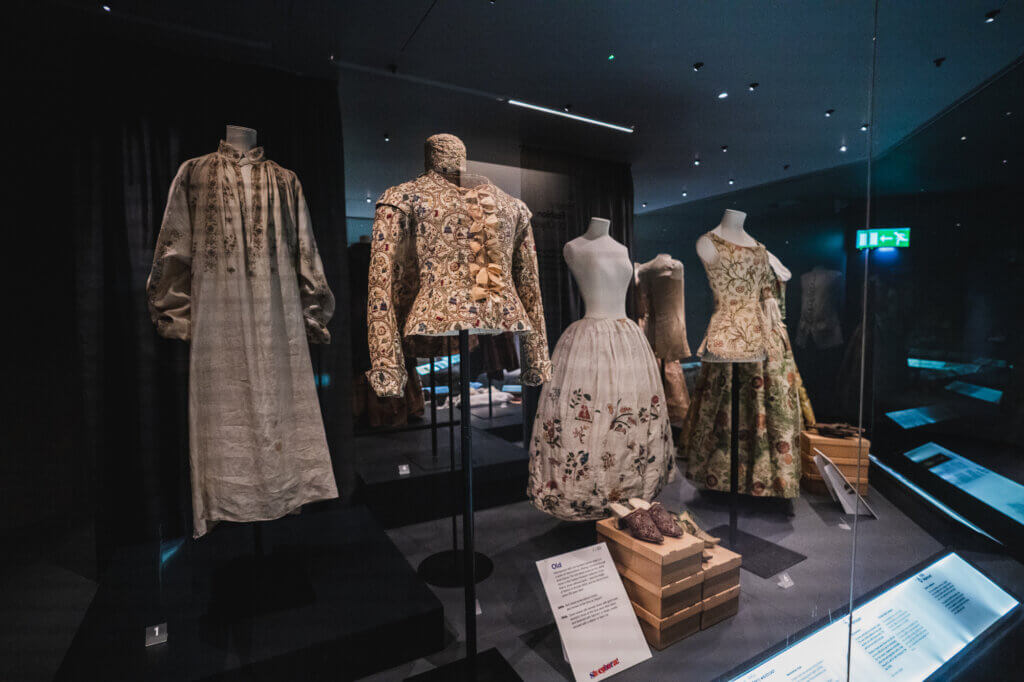
Parade Gardens
Nestled between the River Avon and Bath Abbey are the Parade Gardens, one of the most charming things to see in Bath, especially if you need a break!
The Parade Gardens are not huge but offer a lovely spot to sit and enjoy views over the river to the Pulteney Bridge with the weir before it, or a wander among the flower displays. In summer each year there is a 3D display which is always fun to see.
It does cost a small fee to enter the Parade Gardens (except for Bath residents) of £2 but there is a surprising amount to see in the 2 1/2 acres of garden. Along with a café, there are a number of sculptures in the garden, including one of Prince Bladud and the Pig, referencing the tale of King Lear’s father Bladud, who discovered the springs’ healing powers, according to legend…
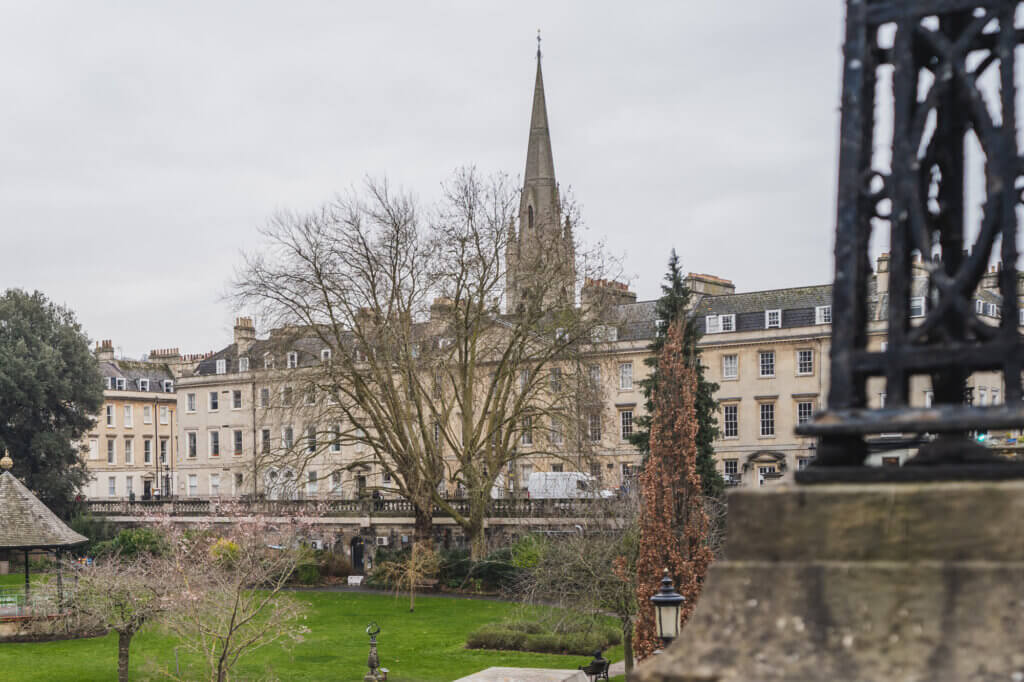
Sally Lunn’s Historic Eating House
A Sally Lunn is a type of bun or teacake that is thought to have originated in the town of Bath and Sally Lunn’s is THE place to go in Bath if you want to try one!
Sally Lunn’s Historic Eating House is definitely one of the oldest houses in Bath, although the claims that Sally Lunn was a Huguenot who came to Bath and invented the bun are not supported by any documents. That doesn’t, however, mean that Sally Lunn’s is not a must-visit Bath attraction.
The Sally Lunn bun is kind of a cross between a bun, a cake and a bread, making it the perfect blank canvas to pair with a variety of spreads, jams, and toppings – both sweet and savoury. Touristy as it may be, the buns here really are delicious, and well worth trying!
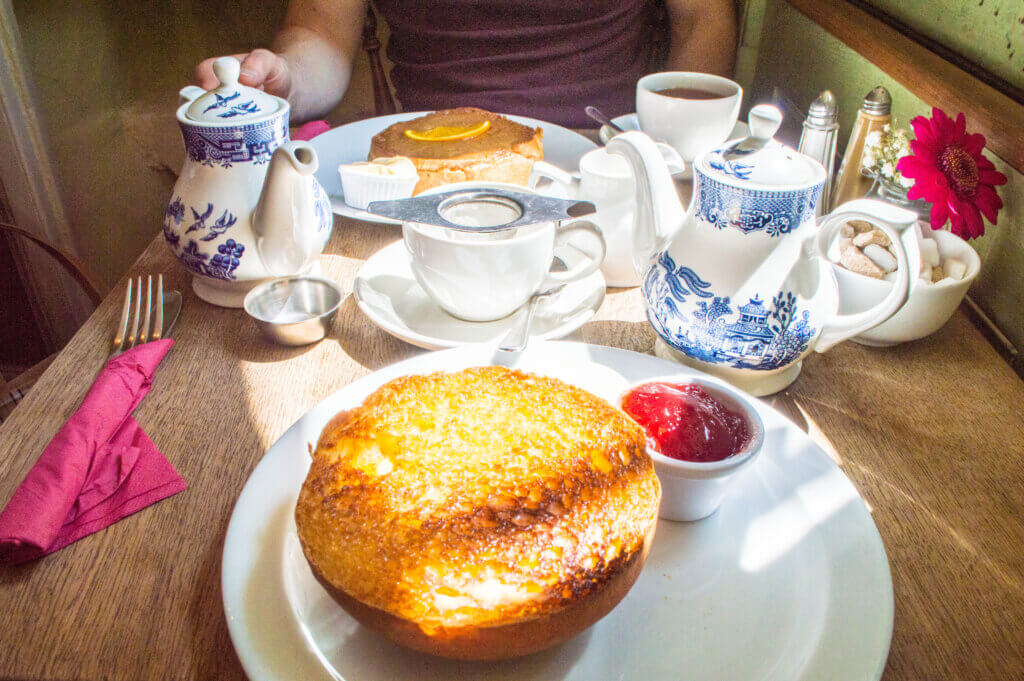
The Holburne Museum
The Holburne Museum was Bath’s first public art gallery and it is housed in what was once the Sydney Hotel. Behind the museum, there are also the beautiful Sydney Gardens for visitors to enjoy. Together, the museum and gardens form one of the best Bath destinations.
The main part of the collection at the Holburne Museum came from the private collection of Sir William Holburne, although it has grown over the years. On display are many impressive paintings (including a number by British artist Thomas Gainsborough), along with examples of porcelain, silver, china and sculptures.
If you feel overwhelmed by the art then you can enjoy a drink or meal in the Garden Café while looking out over the Sydney Gardens. If you’re wondering why the Holburn Museum looks familiar, the front facade was also used as Lady Danbury’s home on Netflix’s Bridgerton!
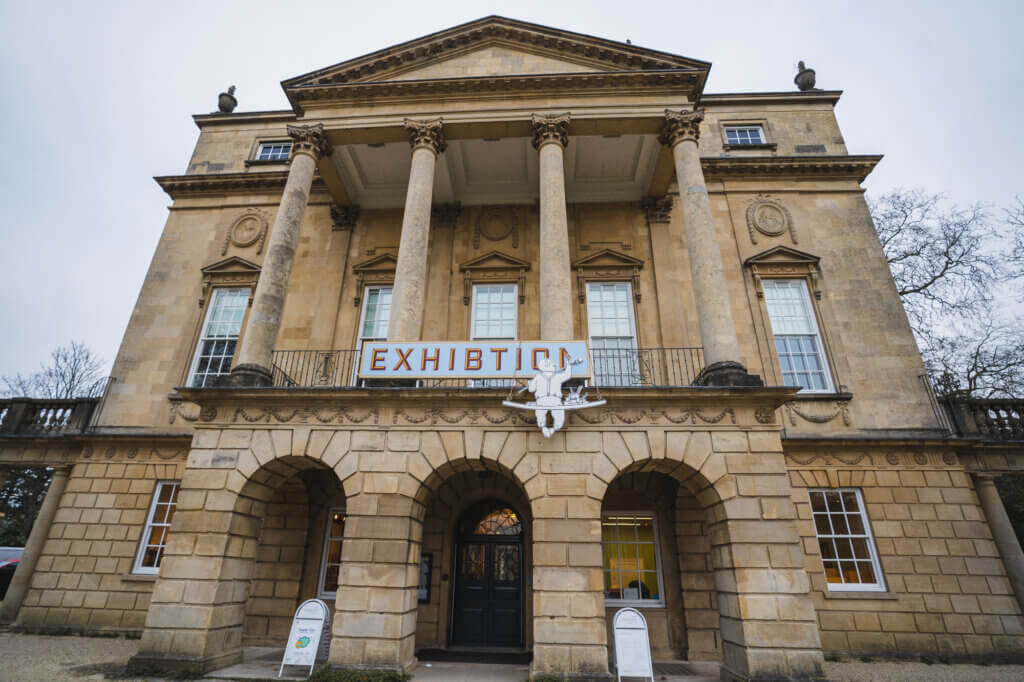
Prior Park Landscape Garden
Prior Park Landscape Garden was originally designed as a landscape garden surrounding Prior Park, a neo-Palladian house built for Ralph Allen by John Wood, the Elder.
Today the Prior Park building is part of Prior Park College, but the land surrounding it is owned by the National Trust as it played a large part in influencing the ‘English landscape garden’ style in Europe.
If you walk to the top of the hill you will be rewarded with stunning views over the greenery down to the Palladian Bridge with Bath city in the background.
There are buses that will take visitors to the park since currently there is no public parking. It also costs a small fee of £5 to enter but in summer particularly it’s a wonderful spot for a walk and/or a picnic.
The Palladian Bridge is the most famous feature, built as a copy of the one at Wilton House near Salisbury.
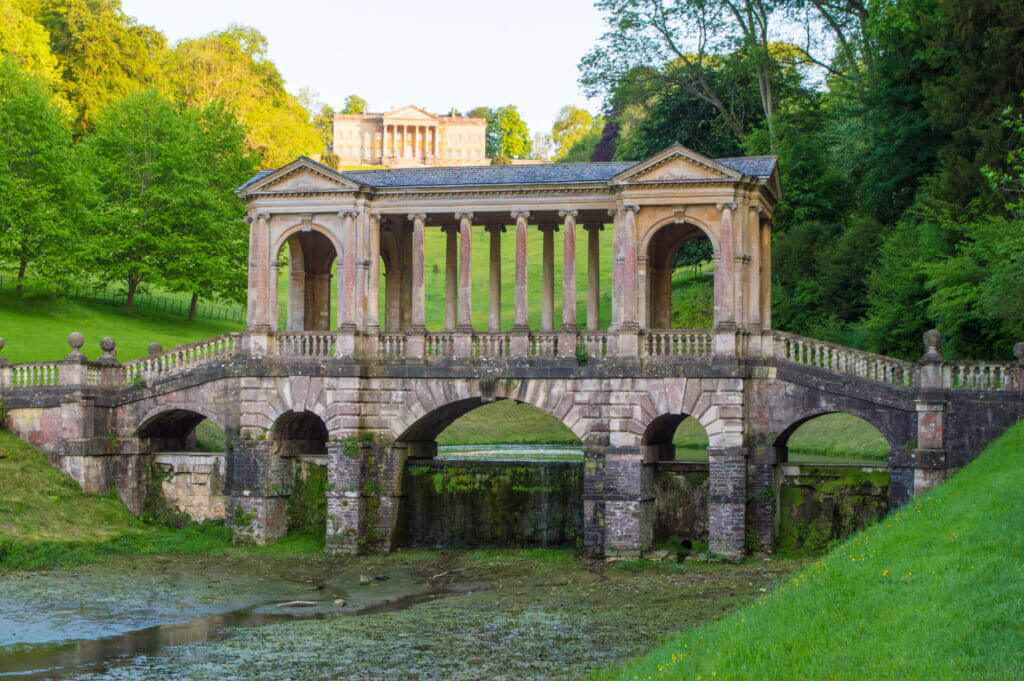
Thermae Bath Spa
While you can’t bathe in the healing waters at the Roman Baths, you can at the Thermae Bath Spa!
Thermae Bath Spa was developed in the early 2000s, opening in 2006 in a very modern site that still manages to preserve and display the heritage Georgian architecture of the original buildings. A visit here is a must if you want to really relax and be pampered.
The spa complex includes two natural thermal baths, an open-air rooftop pool, an indoor pool, an open-air thermal bath, a Hot Bath, a large Wellness Suite with two aromatic steam rooms, an Ice Chamber, an Infrared Sauna, a Celestial Relaxation Room, treatment rooms, relaxation areas and even a café.
In the Cross Bath, you can even see the natural spring where Bath’s famous waters ascend and the rooftop pool is a wonderful spot to relax while enjoying views across the historic city of Bath.
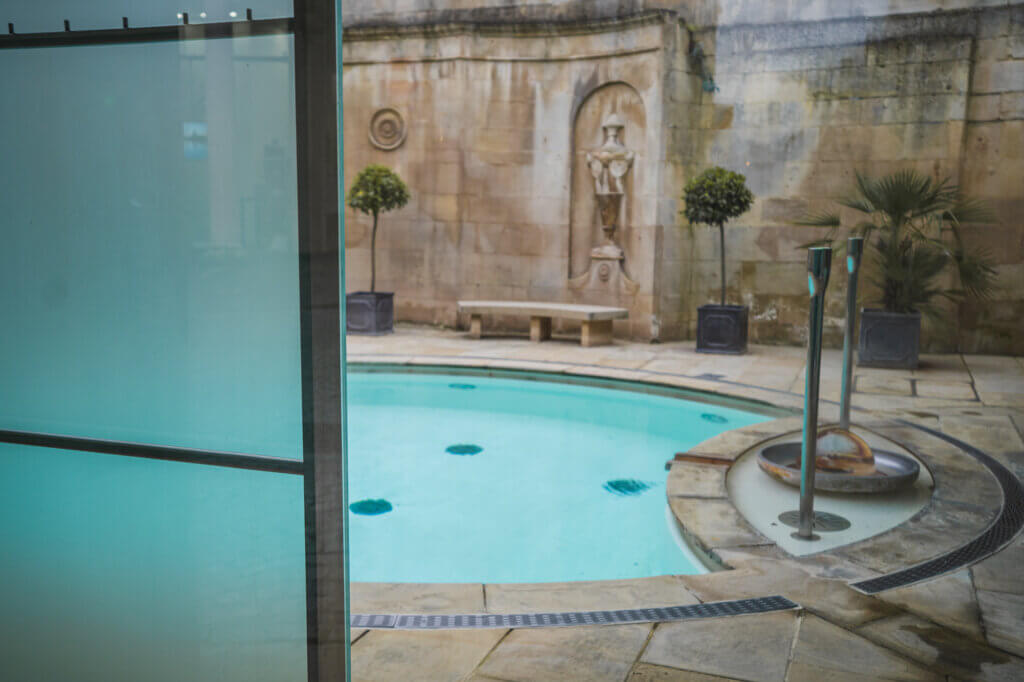
Alexandra Park
One of the best places for panoramic views of Bath is Alexandra Park, a small but beautiful park on a hill to the south of the city centre.
Alexandra Park is a tranquil little spot that’s lovely for a walk or a picnic and has quite spectacular autumn leaf displays if you happen to be visiting at that time of year. It’s quite popular with locals walking their dogs or bringing children to play and you might even see people having a game of boules.
Do be warned – the walk to reach the summit of Alexandra Park is quite steep and can get muddy in winter. But you will be rewarded with some of the best views of the city and on weekends (including Friday) the tiny Choux Box Patisserie van sells delicious French pastries, cakes and macarons!
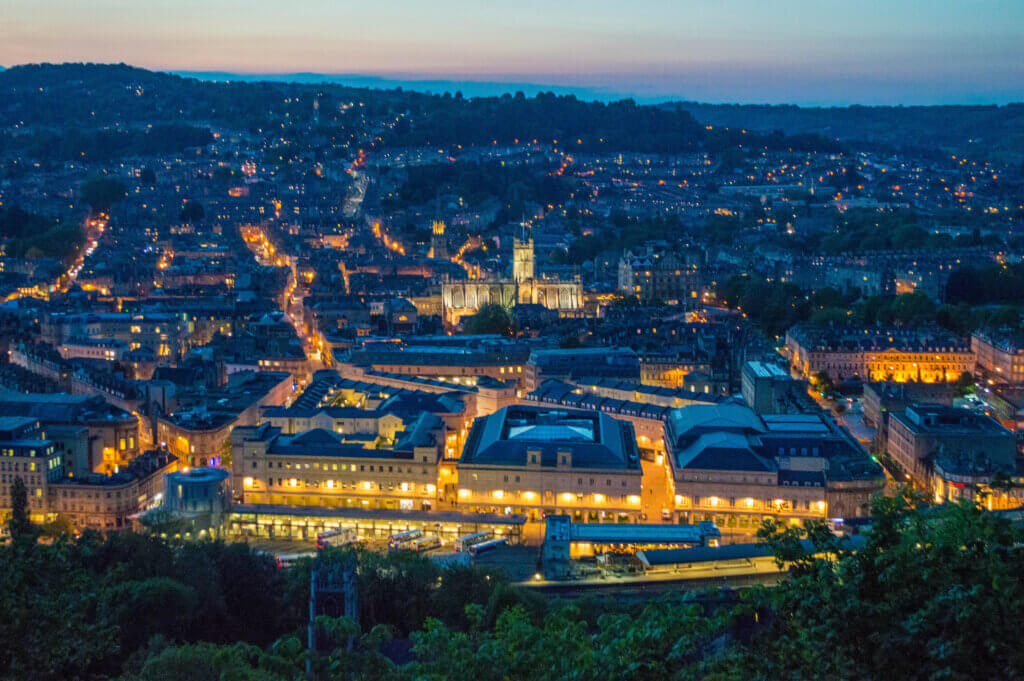
Herschel Museum of Astronomy
William Herschel was a German-born British astronomer who is most famous for discovering the planet Uranus, and you can visit his former home while in Bath.
The Herschel Museum of Astronomy is, obviously, a museum about astronomy, but it’s also been restored as a beautiful example of the Georgian townhouse where Herschel lived with his sister Caroline.
It was in this very house that he actually discovered Uranus, so it’s definitely a must-visit for fans of astronomy.
All of the rooms have been set up as they would have appeared while the Herschels lived there, with a Victorian cast iron range in the kitchen, replicas of the equipment William used to polish his telescope lenses in the workshop and a single action pedal harp in the music room where William taught.
The garden has also been restored to its Georgian style and is a lovely spot to wander.
PRACTICAL INFO FOR VISITING: The Herschel Museum of Astronomy is open Tuesday to Sunday between the 11th of February and the 31st of December (excluding the 25th and 26th of December) from 10am – 5pm. Tickets cost 12 GBP for adults and is free for under 18s with an accompanying adult.
Bath Assembly Rooms
Designed by John Wood the Younger in 1769, when the Bath Assembly Rooms were opened in 1771 they were described as ‘the most noble and elegant of any in the kingdom’.
While the original purpose of the Bath Assembly Rooms was a place for dance and music, today they are a museum open to the public to explore the gorgeous Georgian architecture.
The four main rooms consist of a ballroom (the largest Georgian interior in Bath), a tea room, a card room and the octagon room.
Now a Grade I listed heritage property, visitors head to the Bath Assembly Rooms for exhibits and events, or just to admire the opulent interiors – particularly the ten original crystal chandeliers. You can also join a behind-the-scenes tour to learn more about the stunning building and its history.

Victoria Art Gallery
Bath’s main art gallery was opened in 1900 as part of the diamond jubilee celebrations for Queen Victoria and is a great destination to see British art, especially by local artists.
The Victoria Art Gallery is now a Grade II listed building and contains a number of beautiful objects as well as the many impressive paintings.
The permanent collection is regularly rotated but you can expect to see some works by Thomas Gainsborough and Walter Sickert who both lived and worked in the area.
The building interiors are also stunning, particularly the gorgeous blue walls and a domed ceiling embossed with zodiac signs. Best of all the permanent collection is free to visit, so you only need to pay if you want to see a particular temporary exhibition.
PRACTICAL INFO FOR VISITING: The Victoria Art Gallery is open Tuesday – Sunday from 10.30am until 5pm. Entry is free for the permanent collection.
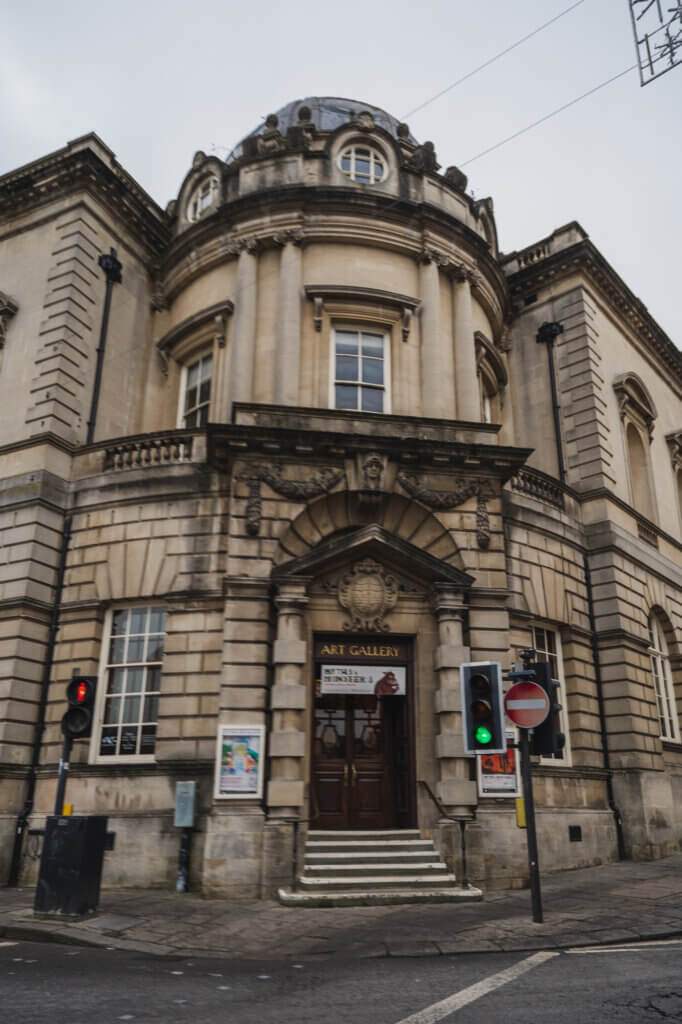
Pulteney Weir
If you were wondering about the weird V-shaped water in the river when looking at the Pulteney Bridge, we can tell you that is the Pulteney Weir and is also an interesting attraction to see in Bath.
There was originally a horseshoe-shaped weir here, dating back to at least 1603. This weir was completely rebuilt in the 1970s when the now iconic v-shape was used. The weir is designed to prevent the River Avon from flooding the city of Bath. There’s also a sluice and controlled floodgates to ensure the water levels remain safe.
You aren’t allowed to swim in the river near the weir nowadays, but a look at this historic photo gallery shows that safety concerns were not so strict in the past, with locals fishing and swimming all around the tiered levels.
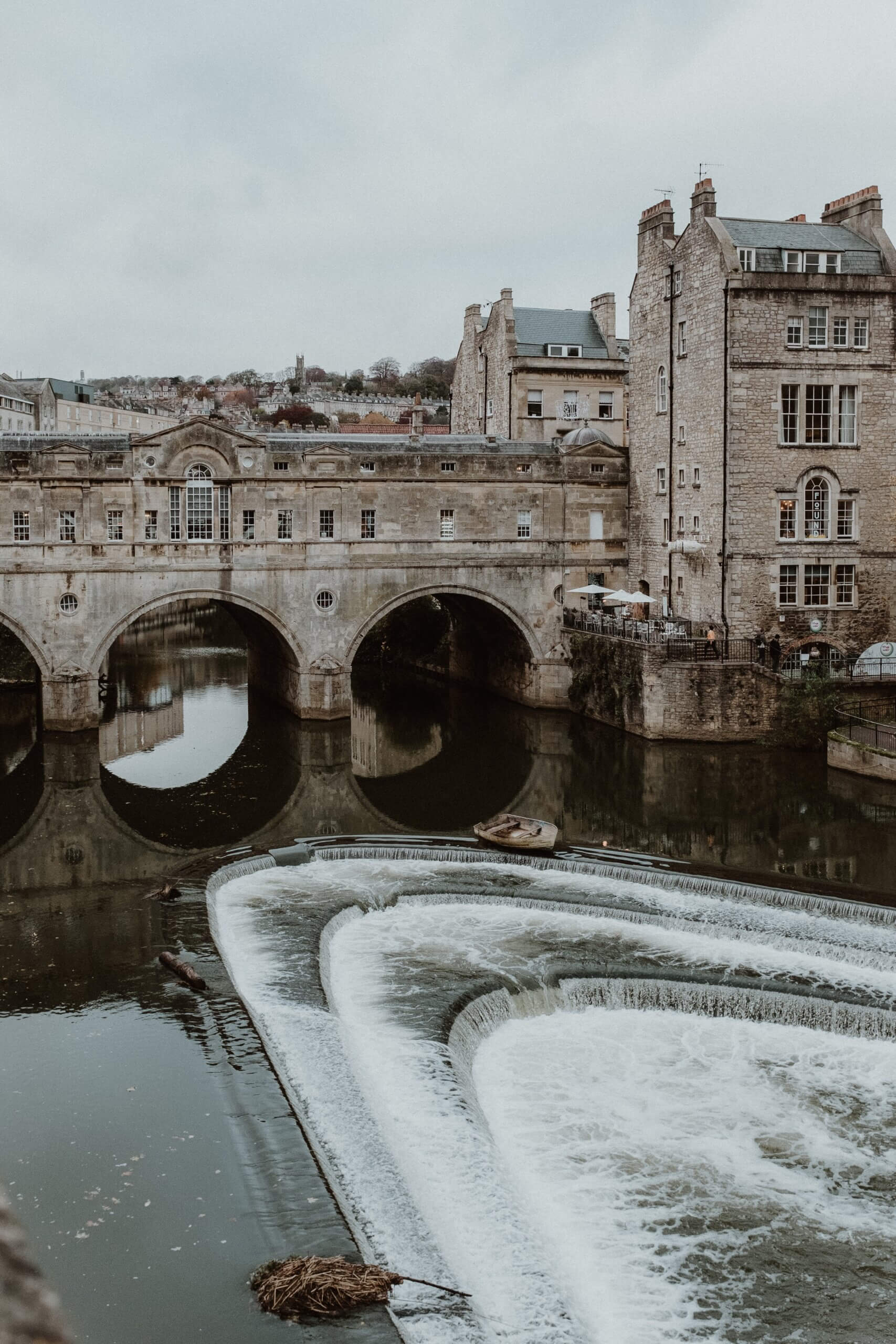
St Mary’s Churchyard
St Mary’s Churchyard is a lovely spot if you’re looking for somewhere to visit in Bath for a bit of peace and quiet.
There was once a medieval church on the spot, called St Mary’s Church Bathwick, but it was demolished in 1818. In 2000, a local historical society decided to conserve and reopen the churchyard, particularly since it was the final resting place of many notable Georgian residents of Bath.
Today you can visit this tranquil site to see a who’s who of architects, soldiers, grand ladies, faithful servants and parish paupers, hidden amongst brambles and ivy. Since it’s still relatively overgrown it’s also become a bit of an urban oasis for birds, butterflies and even badgers.
On this website, you can find a cemetery trail to explore the most noteworthy gravestones within the pretty churchyard.
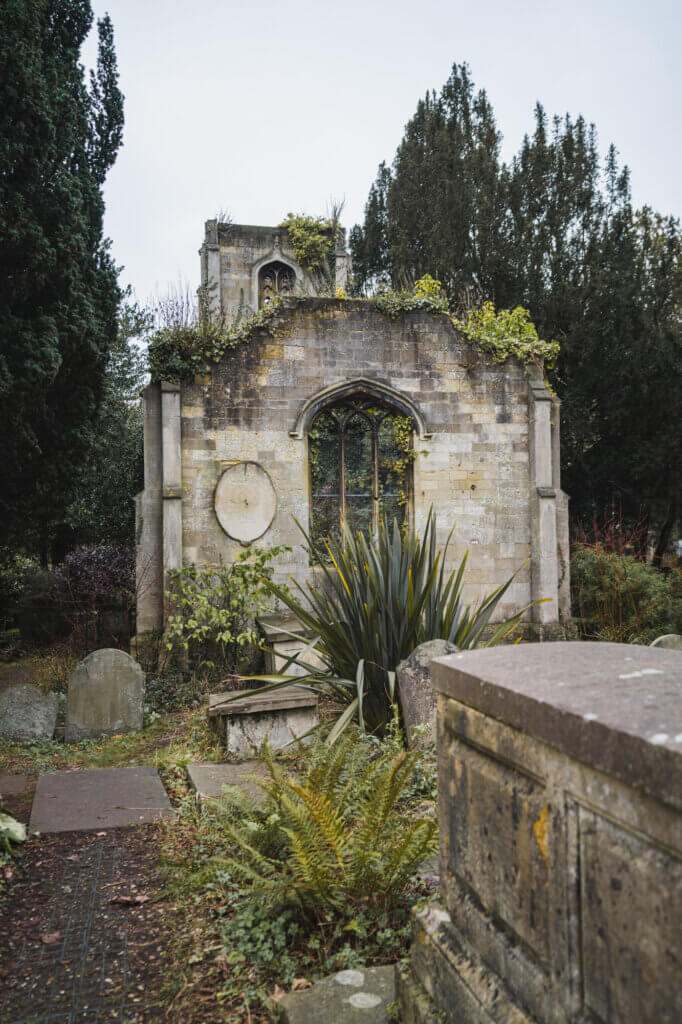
Botanical Gardens of Bath
On the opposite side of Royal Crescent from Bath city centre are the Botanical Gardens of Bath; a delightful section of Royal Victoria Park filled with enchanting gardens and green areas.
Founded in 1840, the Botanical Gardens of Bath cover an area of around 9 acres, with beautifully planted gardens, a scented walkway, a replica Roman temple to the goddess Minerva, a stream and a pond. The gardens are particularly delightful during spring, of course, and there are plenty of places to sit and enjoy the peace away from the city centre.
Don’t miss the Great Dell; an old stone quarry that was transformed into an ornamental garden in 1987. Keep an eye out for a number of interesting sculptures throughout the gardens as well, especially one that was carved out of an old tree.
Mary Shelley’s House of Frankenstein
Another one of the more unusual things to do in Bath is to visit Mary Shelley’s House of Frankenstein, an immersive museum and escape room themed around her famous novel.
While Mary Shelley began writing Frankenstein while in Switzerland with her husband, much of the novel was written and finally completed while they lived in Bath, so it’s fitting that this attraction is located here.
The entire museum is sure to thrill fans of Frankenstein, especially those who want to see a life-sized model of the monster exactly as Shelley described it in her books.
The house consists of ‘multi-sensory environments’ that tell the story of Mary Shelley’s life as well as how she came to write what’s believed to be the first ever sci-fi novel.
While the museum is ominous in some parts it’s not exactly scary either. There’s even a Frankenstein-themed escape room if you’re looking for something fun to do with a group!
PRACTICAL INFO FOR VISITING: Mary Shelley’s House of Frankenstein is open Sunday to Friday from 11am to 5pm and on Saturdays from 10am until 6pm. Tickets cost 12.50 GBP for adults for the house and 25 GBP for the escape room (which includes visiting the main house). It’s recommended to book your tickets online for discounts and to ensure you don’t miss out!
Museum of East Asian Art
Also known as MEAA, the Museum of East Asian Art in Bath is the only museum in the UK completely dedicated to art from East and Southeast Asia.
Located in a restored Georgian house, this museum is a wonderful destination if you enjoy seeing ceramic art, jade ornaments, and carvings made from bronze or bamboo.
It contains one of the most extensive East Asian art collections outside of London, with more than 2,000 objects offering insight into the cultures of China, Japan, Korea and other countries in Southeast Asia.
Chinese tea and porcelain became very popular in Bath during the Georgian era, so it’s not surprising that there are some particularly beautiful examples of this in the museum. The museum gift shop is also an excellent place to buy unique East and Southeast Asian-inspired gifts and souvenirs.
PRACTICAL INFO FOR VISITING: The Museum of East Asian Art is open Wednesday – Friday from 11am until 4pm and from 10am until 4pm on Saturdays. Tickets cost 5 GBP for adults and are free for under 18s.
Sham Castle
Sham Castle is exactly what it sounds like – a fake castle perched next to the Bath Golf Course that nevertheless offers some stunning views over the city.
This folly might not be the remains of a real medieval castle, but it’s still a Grade II listed building since it was constructed around 1762.
Sham Castle was the brainchild of local entrepreneur and philosopher Ralph Allen (the same Ralph Allen who lived in Prior Park), who had it built purely to improve the view from his Bath townhouse!
From a distance, it looks like there is a grand castle on the hill, but once you get up close it’s actually ‘only’ a screen wall with some turrets and towers – and nothing behind. But you can take some clever photos to make it seem more ‘real’ and enjoy the views from the castle over Bath city.
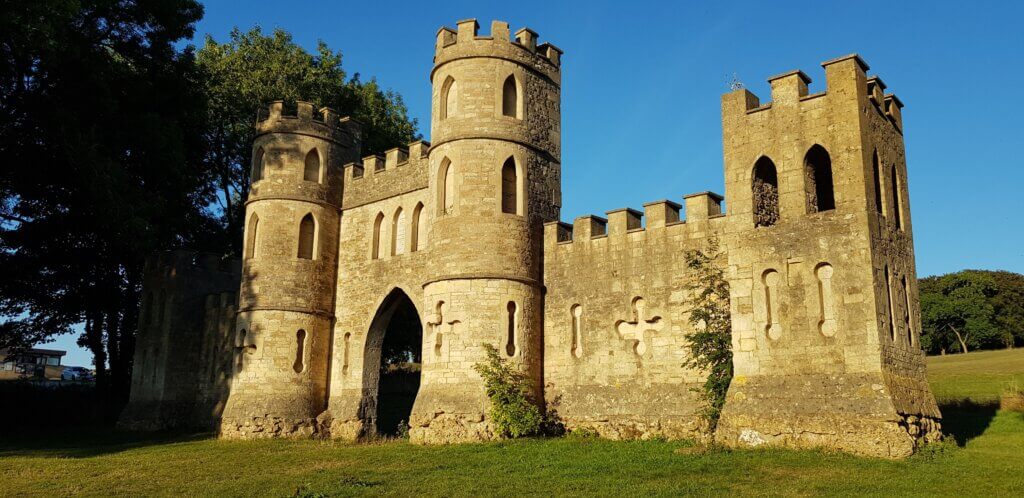
Have we missed any of your favourite places to visit in Bath?
Let us know in the comments!
